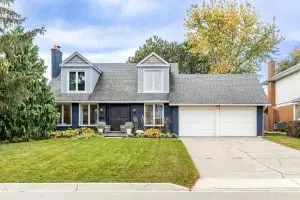Colorado is Struggling in Affordability and Homebuilding: Can Governor Polis Build the Momentum?
Colorado’s housing boom has brought new residents and rising prices—but not enough homes.
The state earned a C on Realtor.com® State-by-State Housing Report Card, signaling that while its construction pace remains steady, affordability continues to erode. The report, part of the Let America Build campaign, measures how each state balances affordability and new construction as a sign of future housing health.
Colorado’s results show a market where economic growth has outpaced supply, leaving buyers squeezed and builders facing mounting costs.
But this is the situation in most of the country. Hoping to spur on action, President Donald Trump recently put pressure on large homebuilders to increase construction nationwide. In a post on his Truth Social platform in early October, he accused major builders of hoarding lots to prop up prices — likening them to OPEC, which restricts oil output to maintain high prices.
“They’re my friends … but now, they can get Financing, and they have to start building Homes. They’re sitting on 2 Million empty lots, A RECORD,” Trump wrote. He urged Fannie Mae and Freddie Mac to intervene and “get Big Homebuilders going” in order to “restore the American Dream.”
But is there more Colorado's own government can do to fix the problem?
The data behind Colorado’s “C”
Colorado posted a total score of 51.1, squarely in the middle of the national rankings. The state’s median listing price reached $599,104, while the median household income was $90,555—a gap that leaves many buyers struggling to enter the market. The Realtor Affordability Score came in at 0.55, highlighting just how few listings are attainable for typical households.
In terms of new construction, Colorado remains active but not exceptional. It accounted for 2.2% of the nation’s housing permits in 2024, nearly in line with its 1.8% share of the U.S. population. That gives the state a modest permit-to-population ratio of about 1.2, showing that builders are keeping pace—but not enough to meaningfully close the supply gap.
The new construction premium, or the difference between new and existing home prices, was a modest 5.3%, suggesting that new builds are only slightly more expensive than older homes—a good sign for buyers if supply continues to expand.
How Colorado compares nationally
According to the Realtor.com New Construction Insights report, newly built homes nationwide are helping to ease affordability challenges. The median listing price for new homes was $450,797, nearly unchanged year over year, while resale prices rose 2.4%. That narrowed the national new construction premium to 7.8%, the lowest level in the dataset’s history.
Regionally, the South continues to lead in both affordability and volume of new builds, while the West—home to Colorado—faces higher land costs, supply bottlenecks, and more restrictive zoning. The findings showed that the West saw the steepest drop in the share of new-construction listings compared to last year, even as the total number of homes under construction rose.
But new construction is a critical element to fixing the housing supply.
“America is short more than 4.7 million homes, and every new home built helps close that gap while fueling local economies," says Shannon McGahn, NAR’s Executive Vice President and Chief Advocacy Officer.
"NAR research shows that the U.S. has faced a persistent housing shortage for more than a decade, driving up prices and limiting options for buyers. Expanding housing supply creates jobs, supports small businesses, and affords families the opportunity to build generational wealth.”
Governor Polis aims to boost housing supply
With all that said, Governor Jared Polis has made housing one of his administration’s top priorities.
“This report illustrates the importance of the urgent need to create more housing that Coloradans can afford,” Governor Polis told Realto.com.
“We’re fighting hard to remove bureaucratic barriers and restrictions that stand in the way of new housing and to increase the supply of housing for every Colorado budget,”
For example, in 2025, he issued new executive actions to accelerate building and break down local barriers to affordable housing. His directive instructs state agencies to prioritize grants and funding for communities that promote more housing construction, especially those supporting transit-oriented and mixed-use projects.
“We are building more housing now and breaking down government barriers to new homes,” Polis said when announcing the initiative. “This action will lead to more housing that people can afford.” The governor’s plan also emphasizes reducing permitting delays and expanding housing options near public transit, reflecting a shift toward smart-growth policies aimed at easing the state’s cost of living.
Polis has also signed several related laws that expand housing types allowed statewide, legalize accessory dwelling units (ADUs), and reduce parking mandates—all designed to cut costs and speed construction.
Categories
Recent Posts










GET MORE INFORMATION

